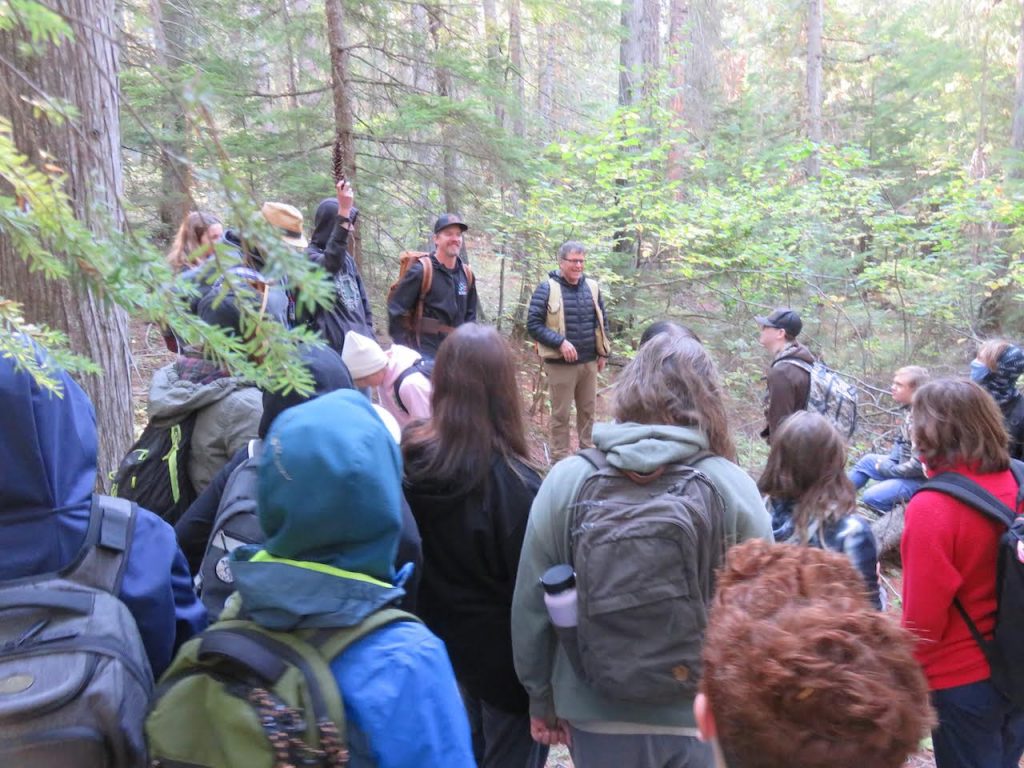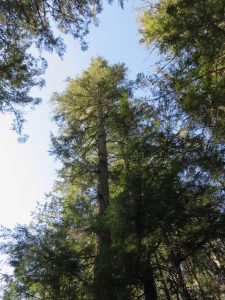
News/Reports
Vance Creek ER ..An Ecological Reserve as an Outdoor Classroom
An Ecological Reserve as an Outdoor Classroom by Harold Sellers
 Vance Creek Ecological Reserve was visited this past September by a group of high school students from Vernon. Rob Buchanan is a teacher at Clarence Fulton Secondary School in Vernon, where he leads the Awaken Inquiry Adventure Okanagan(AIAO) program. There are about 30 students in the program, which provides them with a rich variety of frequent outdoor explorations. During the outings, the students are immersed in nature, learning from mentors and experts whom Rob invites to come along. The learning experienced by the young people is the result of the curiosity of the students themselves.
Vance Creek Ecological Reserve was visited this past September by a group of high school students from Vernon. Rob Buchanan is a teacher at Clarence Fulton Secondary School in Vernon, where he leads the Awaken Inquiry Adventure Okanagan(AIAO) program. There are about 30 students in the program, which provides them with a rich variety of frequent outdoor explorations. During the outings, the students are immersed in nature, learning from mentors and experts whom Rob invites to come along. The learning experienced by the young people is the result of the curiosity of the students themselves.
Vance Creek Ecological Reserve is ER #30, located 33 km from Vernon and a short drive north of the town of Lumby. Its 49 hectares are on the edge of a Cedar-Hemlock Zone. It was established in 1972 for research and education purposes because it contains an usually large number of conifer species on a single site. There are eight: Western Larch, Ponderosa Pine, Lodgepole Pine, Western White Pine, WesternHemlock, Engelmann Spruce, Interior Douglas-fir, and Western Redcedar. No logging has taken place here since the 1930s. Joining the tour group was Dr. Ward Strong, a retired BC Ministry of Forests research scientist. Your writer, a warden for another Okanagan ER, shared some words about ERs. Dr. Strong’s specialty was, and is, forestry . Retirement has not dimmed his enthusiasm in the least! He explained to the students how the site was used, prior to becoming an Ecological Reserve, in the early study of pest insects to identify species and the trees that they attacked. Larvae were brought from around BC, raised and studied here.
 For fifty years, from 1920 to 1970, the site was a national and technological hub for the study of insect species. At one time over 40 people worked there!! In those days, the dedicated personnel of the Vernon forest entomology laboratory conducted groundbreaking scientific research, battled epidemics threatening commercial timber, and diligently monitored insect populations. Dr. Strong’s enthralling stories about his adventures kept everyone engaged. Teacher Rob Buchanan said: “We delved into a myriad of topics, from the fascinating world of insect diversity and its impact on ecosystem health to the use of insects as indicators of ecosystem well- being. We learned how invasive species can disrupt ecological processes, the intricate world of pheromone communication, and the essential field equipment of an entomologist. Dr. Strong also shed light on hyperparasites, parasitoids, and their roles in ecosystem population control, as well as the complex dynamics of the mountain pine beetle. “Our discussions expanded beyond insects to encompass the characteristics of old-growth forests, which extend far beyond the notion of big trees. We explored the significance of Ecological Reserves as permanent sanctuaries preserving British Columbia’s diverse ecosystems, rare and endangered plant and animal species, and unique geological features. These reserves also provide vital spaces for scientific research and environmental education.”
For fifty years, from 1920 to 1970, the site was a national and technological hub for the study of insect species. At one time over 40 people worked there!! In those days, the dedicated personnel of the Vernon forest entomology laboratory conducted groundbreaking scientific research, battled epidemics threatening commercial timber, and diligently monitored insect populations. Dr. Strong’s enthralling stories about his adventures kept everyone engaged. Teacher Rob Buchanan said: “We delved into a myriad of topics, from the fascinating world of insect diversity and its impact on ecosystem health to the use of insects as indicators of ecosystem well- being. We learned how invasive species can disrupt ecological processes, the intricate world of pheromone communication, and the essential field equipment of an entomologist. Dr. Strong also shed light on hyperparasites, parasitoids, and their roles in ecosystem population control, as well as the complex dynamics of the mountain pine beetle. “Our discussions expanded beyond insects to encompass the characteristics of old-growth forests, which extend far beyond the notion of big trees. We explored the significance of Ecological Reserves as permanent sanctuaries preserving British Columbia’s diverse ecosystems, rare and endangered plant and animal species, and unique geological features. These reserves also provide vital spaces for scientific research and environmental education.”
The day was a good example of the continuing importance of Ecological Reserves. They can preserve important ecosystems, provide protected homes for numerous species and might even serve as outdoor classrooms for students. One day one of those students might be doing doing valuable research, continuing work that had its origins in locations now protected as ERs.
